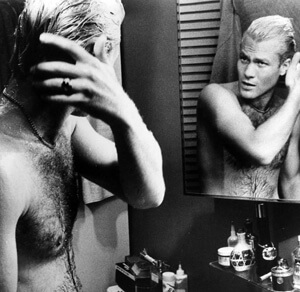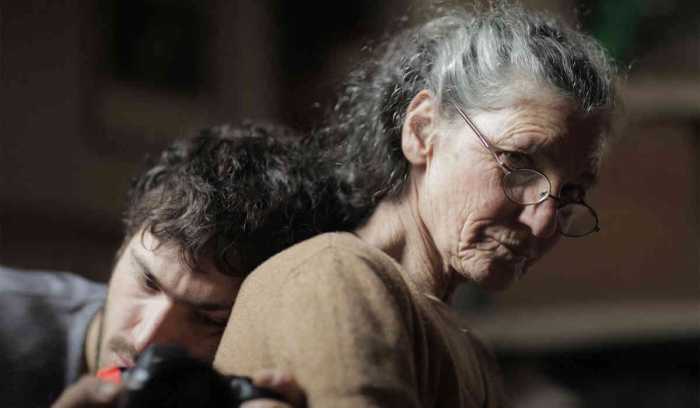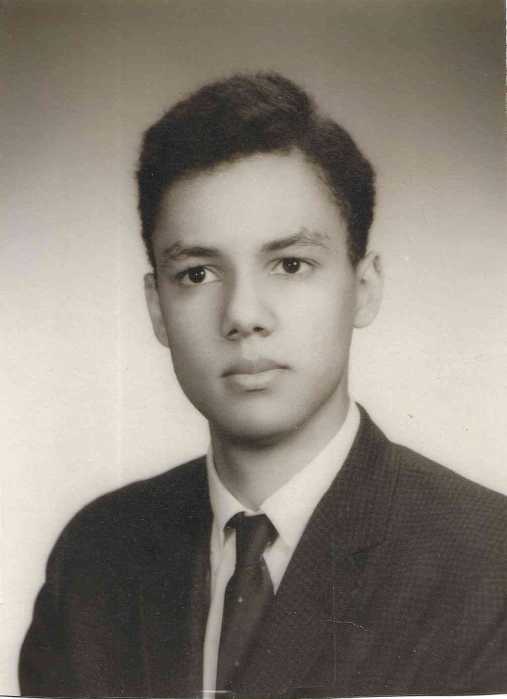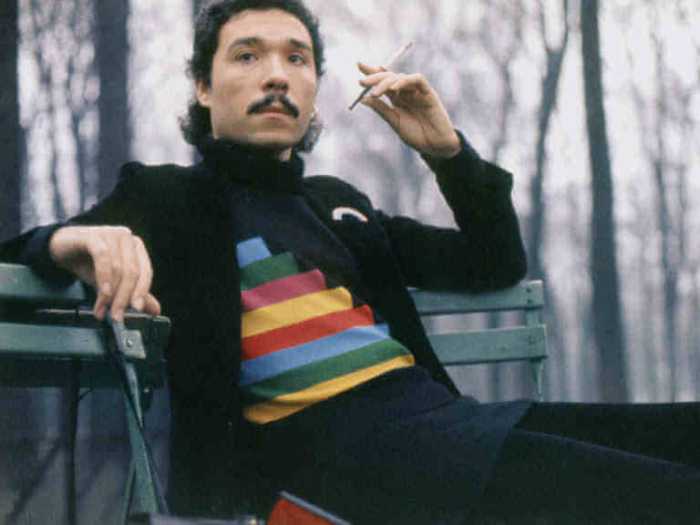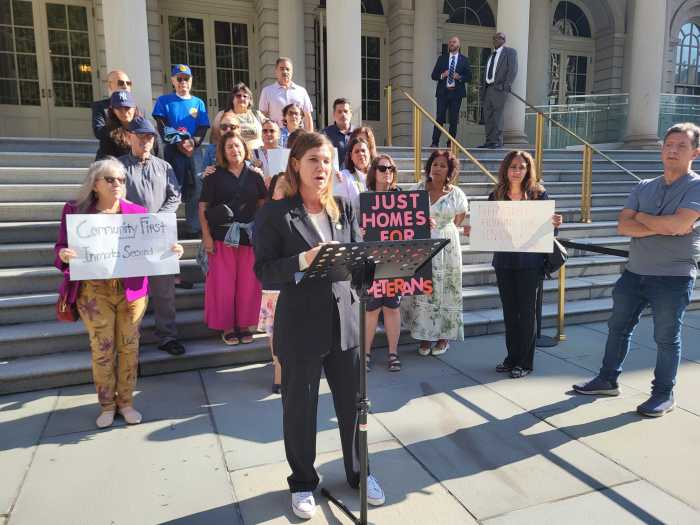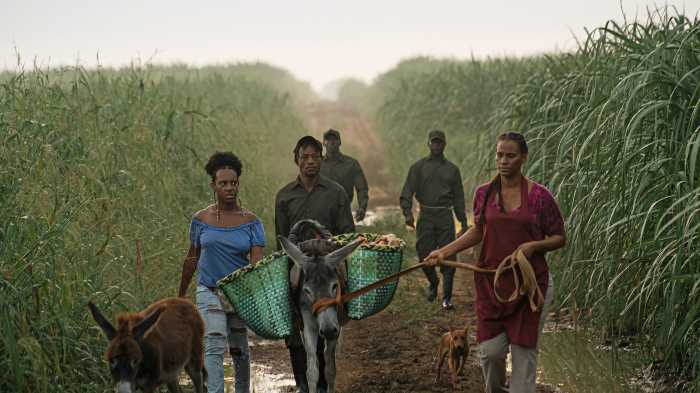Edwin Cha Son Noh. | COURTESY: DAVID NOH
The holiday season of the particularly difficult year that was 2012 brought a true rite of passage for me with the death of my father, Edwin Cha Son Noh. He was quite a guy, having served at Pearl Harbor in 1941, owned and operated hotels in Waikiki, opened the first real Korean restaurant in Hawaii, and created Noh Foods International, which pioneered packaged powdered food sauce mixes, which, with the addition of water, made marinades that brought Asian flavoring to humdrum chicken and meat dishes.
Hawaii calls again, master of pleats, NY underground
His passing made the local news in a surprisingly big way and his funeral was beautiful, with a full military guard and a bugler playing taps in a way that movingly evoked that Hawaii-set classic “From Here to Eternity.” As sad as the occasion was, I will be forever grateful to him for his final gift to me — a mid-winter escape to Paradise.
The holidays are peak tourist season in the islands, accompanied by a flurry of interesting cultural events. I saw the Actors Group production of Martin McDonagh’s darkly twisted “The Pillowman.” As many reservations as I have about this play, with its theme of children’s murders — exacerbated by horrific recent events — there was no denying the merits of performances by Seth Lilley as the gruesome tale-spinning Katurian and, especially, Adam Lefebvre as his oh-so damaged brother.
Honolulu Theatre for Youth presented “Rap’s Hawaii,” a stirring tribute to the comic genius that was Rap Reiplinger (1950-84). Reiplinger, like Barack Obama, went to Punahou School, and I remember what a delightful Og the Leprechaun he made in the senior class production of “Finian’s Rainbow.” After that, his performing and writing skills really took off, as this native Hawaiian had an unerringly humorous take on the foibles and fabulousness of all the ethnic and social groups that make up the 50th State’s precarious melting pot. His efforts peaked with his 1982 TV special, “Rap’s Hawaii,” truly one of the most side-splittingly funny comic showcases ever, in which he convulsingly offered everything from your typical, Pidgin English-spouting surfer boy to hysterical drag turns as a dim-witted hotel telephone operator. Check out his cooking show star Auntie Marialani, whose incessant imbibing of cooking sherry leads to an oven disaster (tinyurl.com/b22pdm8). Reiplinger was Hawaii’s own version of his contemporary comic nova, John Belushi — every bit as talented and every bit as fucked up, ridiculously dying of a cocaine overdose at age 33.
Another legend who adored Hawaii, Elvis Presley, was being celebrated with the 40th anniversary of his famous 1973 “Aloha from Hawaii” TV special. A special screening was held at the Neal Blaisdell Arena on January 13, with a completely remastered video projected on multiple screens in Dolby 5.1 surround sound. My Dad took the family to the show’s live taping and, frankly — being far more into Neil Young, Laura Nyro, and Joni Mitchell at the time — I remember being underwhelmed by the experience, as the King seemed more focused on the TV cameras than the audience, endlessly striking the same iconic poses in that outlandish white, bejeweled get-up of his.
Presley’s 1961 film, “Blue Hawaii,” instigated his lifelong island love affair, and the top-selling soundtrack was in seemingly every American living room of the era. On the album cover, the aloha shirt he wore bore the classic Tiare Tapa print, designed by Alfred Shaheen’s company — though the credited costume designer for the movie was Edith Head, ever notorious for not sharing billing with designers she utilized.
“HI Fashion: The Legacy of Alfred Shaheen” at Honolulu’s Bishop Museum. | COURTESY: DAVID NOH
The marvelously refurbished Bishop Museum hosted a terrific exhibit, “HI Fashion: The Legacy of Alfred Shaheen,” which focused on this Lebanese émigré who started a local fashion empire in 1948. Shaheen’s vibrantly printed aloha shirts, muumuus, hostess gowns, and swimsuits epitomize for me the elusive glamour and ethnically inspired sophistication that was pre-1970s Hawaii, before they completely paved paradise to put up parking lots and condos — and those hordes of Japanese tourists overran everything.
In New York, you can catch another wonderful fashion exhibit, “Fortuny y Madrazo: An Artistic Legacy,” at the elegant Queen Sofía Spanish Institute (684 Park Ave. at 68th St., through Mar. 30; spanishinstitute.org). Of all the iconic garments of history — the Vionnet bias-cut 1930s satin gown, Chanel suit, Yves Saint Laurent “smoking,” Halston sarong — the timeless, multi-pleated sheaths created by Mariano Fortuny y Madrazo (1871- 1949) seem to me the most covetable of all. Marcel Proust extolled them in “Remembrance of Things Past,” and they were worn by eminent women from Eleanora Duse to Lillian Gish, Lauren Bacall, Lauren Hutton, and Tina Chow. Curated by Oscar de la Renta, this show is the most exquisite thing you’ll ever see, masterfully designed and lit, with those classic garments quietly shimmering in their iridescent, deep jewel tones.
The winter cold is perfect weather to sequester yourself in museums and overwhelm your senses, and you can give your nose a treat with a visit to the Museum of Arts and Design and its show, “The Art of Scent — 1889-2012” (2 Columbus Circle, through Mar. 3; madmuseum.org). Here, you literally bury your face in special wall masks, designed by Diller Scofidio + Renfro, which emanate such historically significant scents as Guerlain’s Jicky (1889), Chanel No. 5, L’Interdit (1957), Issey Miyake’s L’eau d’Issey (1992), Thierry Mugler’s Angel (1992), and Prada Amber (2003).
Also at the same museum is “Doris Duke’s Shangri-La” (through Feb. 17), which features the creation of that madcap heiress’ fabled Islamic palace in Honolulu, just up the sands from the very gay Diamond Head beach.
Victor Childe in Kenneth Anger’s “Scorpio Rising,” screening at the Film Forum on January 25. | FILM FORUM
The vibrant beginning of independent cinema in New York is spotlighted in Film Forum’s comprehensive “NEW YAWK NEW WAVE,” chock-full of rarely seen enticements from a variety of queer auteurs (209 W. Houston, btwn. Sixth Ave. & Varick St., through Jan. 31; filmforum.org). “Dutchman” (Jan. 16-17), directed by gay lenser Anthony Harvey, is the incendiary Leroi Jones-scripted encounter between a psychotic white woman (Shirley Knight) and a mild-mannered black man (Al Freeman, Jr.).
Kenneth Anger, of “Hollywood Babylon” fame, directed “Scorpio Rising” (Jan. 25), a groundbreaking piece of gay eroticism, featuring S&M biker fantasies, set to a soundtrack of 1950s and ‘60s pop. When the film was shown in Los Angeles, the theater manager was arrested for public obscenity, and the case went to the California Supreme Court, where it was settled in Anger's favor. Andy Warhol’s “My Hustler” (Jan.25) was filmed on Fire Island and follows an older man’s quest for companionship by using a “Dial A Hustler” service — in 1965! “The Queen” (Jan. 25) is a documentary that focuses on Jack, aka Sabrina, who enters a 1967 New York national drag queen contest.
Martin Scorsese’s career-making “Mean Streets” (1973) is being screened (Jan. 30-31), a film starring then-tyro talents Robert DeNiro and Harvey Keitel (at their very best). Even as early in Scorsese’s career as it was, the film was infinitely superior to many of his later, more bloated efforts.
Paul American in Andy Warhol and Chuck Wein’s “My Hustler,” screening at the Film Forum on January 25. | FILM FORUM/ PHOTOFEST
Some intriguing personal appearances will be made during the course of this festival. Carroll Baker will introduce “Something Wild” (Jan. 18-19), in which she plays a rape victim and was directed by her then-husband, Jack Garfein, a survivor of both Auschwitz and the Actors Studio. Rita Gam, who has played everything from Herodias in “King of Kings” to a lesbian prostitute in “Klute” and a character on “The Honeymooners,” will appear with “The Thief,” a 1952 film dealing with the nuclear threat.
Director and writer Paul Morrissey will help unveil “Trash” and “Women in Revolt” (Jan. 26), two delirious Warhol-produced epics, featuring drag goddesses Holly Woodlawn, Candy Darling, and Jackie Curtis, as well as Joe Dallesandro’s impressive penis. The ineffably weird and wonderful Andrea Feldman also appears in “Trash,” hilariously nattering on about health foods, this coming from a totally unregenerate junkie who, in 1972, invited several ex-boyfriends to her parents’ apartment to witness what she dubbed her “final starring role.” Holding a Bible and a crucifix, she jumped from the 14th floor of 51 Fifth Avenue.
Contact David Noh at Inthenoh@aol.com and check out his blog at http://nohway.wordpress.com/.

